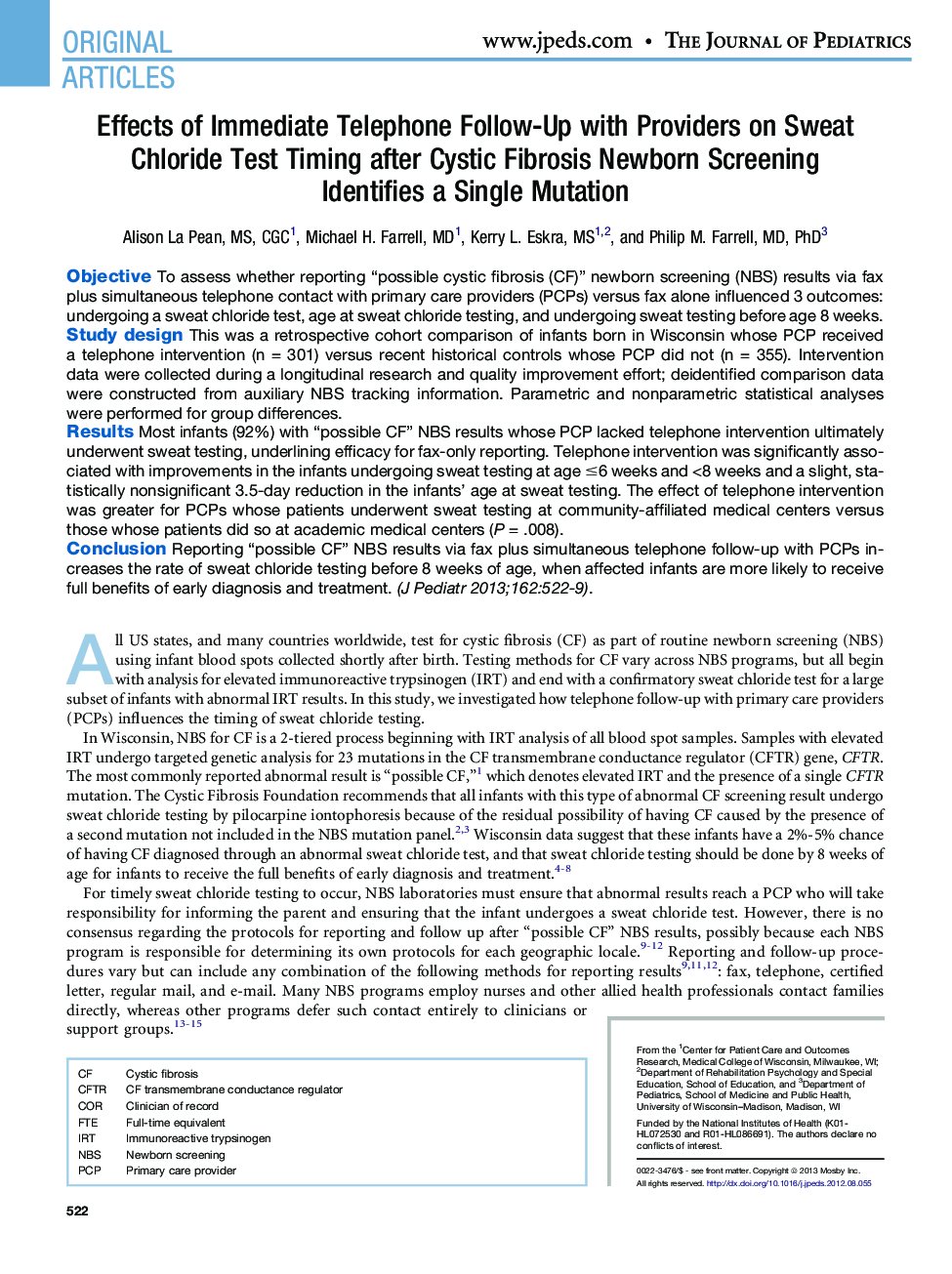| کد مقاله | کد نشریه | سال انتشار | مقاله انگلیسی | نسخه تمام متن |
|---|---|---|---|---|
| 6224165 | 1607471 | 2013 | 8 صفحه PDF | دانلود رایگان |
ObjectiveTo assess whether reporting “possible cystic fibrosis (CF)” newborn screening (NBS) results via fax plus simultaneous telephone contact with primary care providers (PCPs) versus fax alone influenced 3 outcomes: undergoing a sweat chloride test, age at sweat chloride testing, and undergoing sweat testing before age 8 weeks.Study designThis was a retrospective cohort comparison of infants born in Wisconsin whose PCP received a telephone intervention (n = 301) versus recent historical controls whose PCP did not (n = 355). Intervention data were collected during a longitudinal research and quality improvement effort; deidentified comparison data were constructed from auxiliary NBS tracking information. Parametric and nonparametric statistical analyses were performed for group differences.ResultsMost infants (92%) with “possible CF” NBS results whose PCP lacked telephone intervention ultimately underwent sweat testing, underlining efficacy for fax-only reporting. Telephone intervention was significantly associated with improvements in the infants undergoing sweat testing at age â¤6 weeks and <8 weeks and a slight, statistically nonsignificant 3.5-day reduction in the infants' age at sweat testing. The effect of telephone intervention was greater for PCPs whose patients underwent sweat testing at community-affiliated medical centers versus those whose patients did so at academic medical centers (P = .008).ConclusionReporting “possible CF” NBS results via fax plus simultaneous telephone follow-up with PCPs increases the rate of sweat chloride testing before 8 weeks of age, when affected infants are more likely to receive full benefits of early diagnosis and treatment.
Journal: The Journal of Pediatrics - Volume 162, Issue 3, March 2013, Pages 522-529
